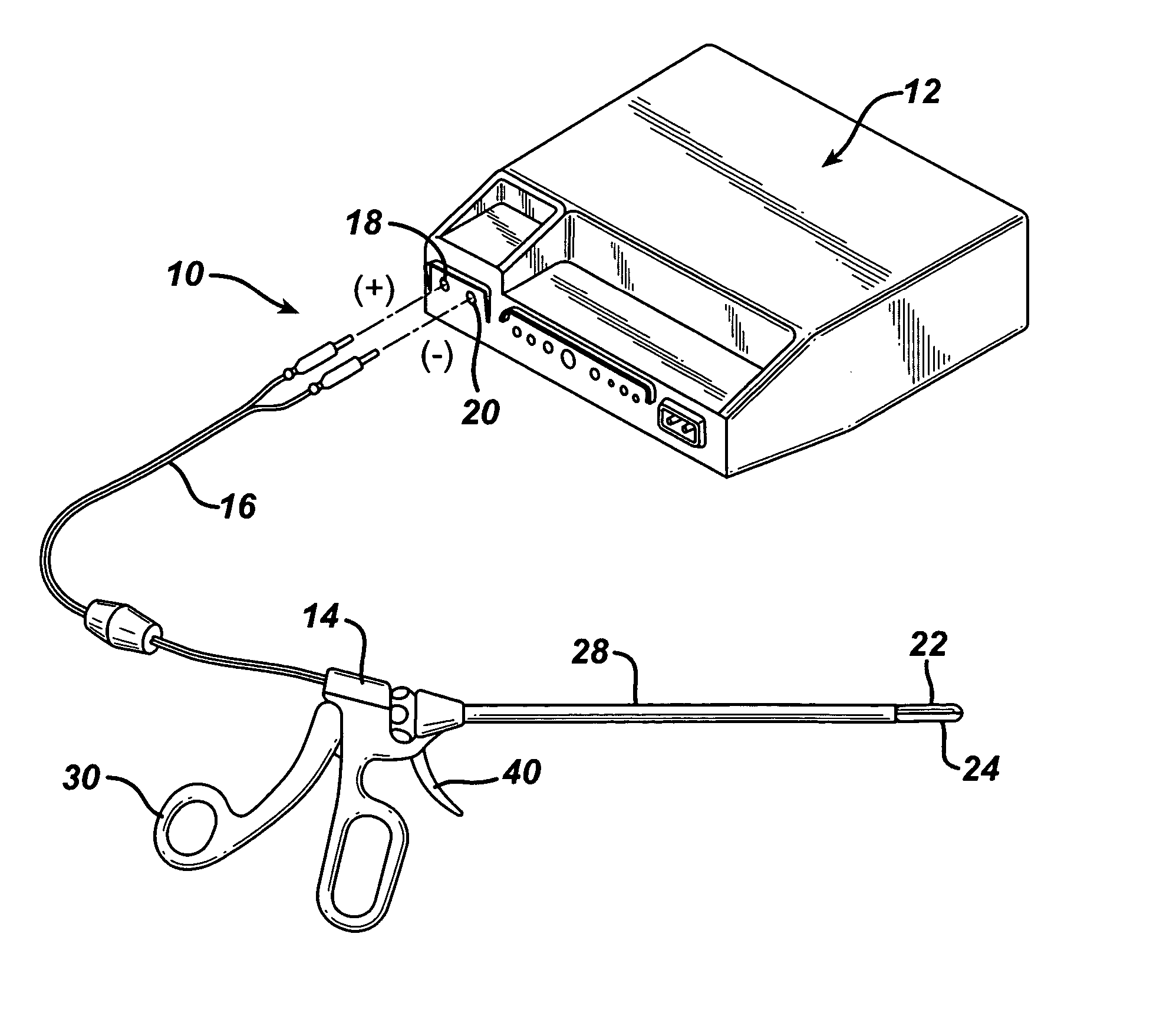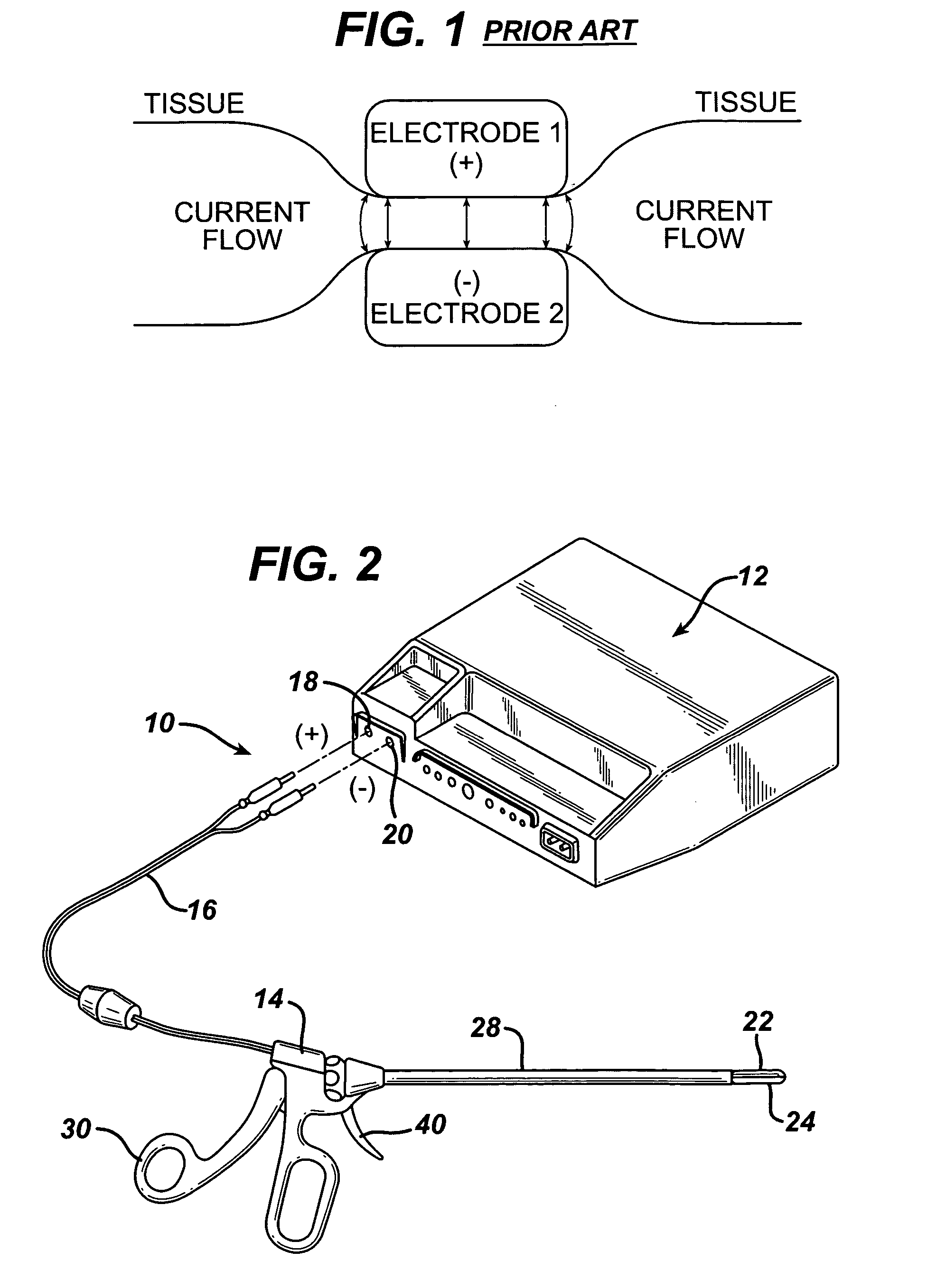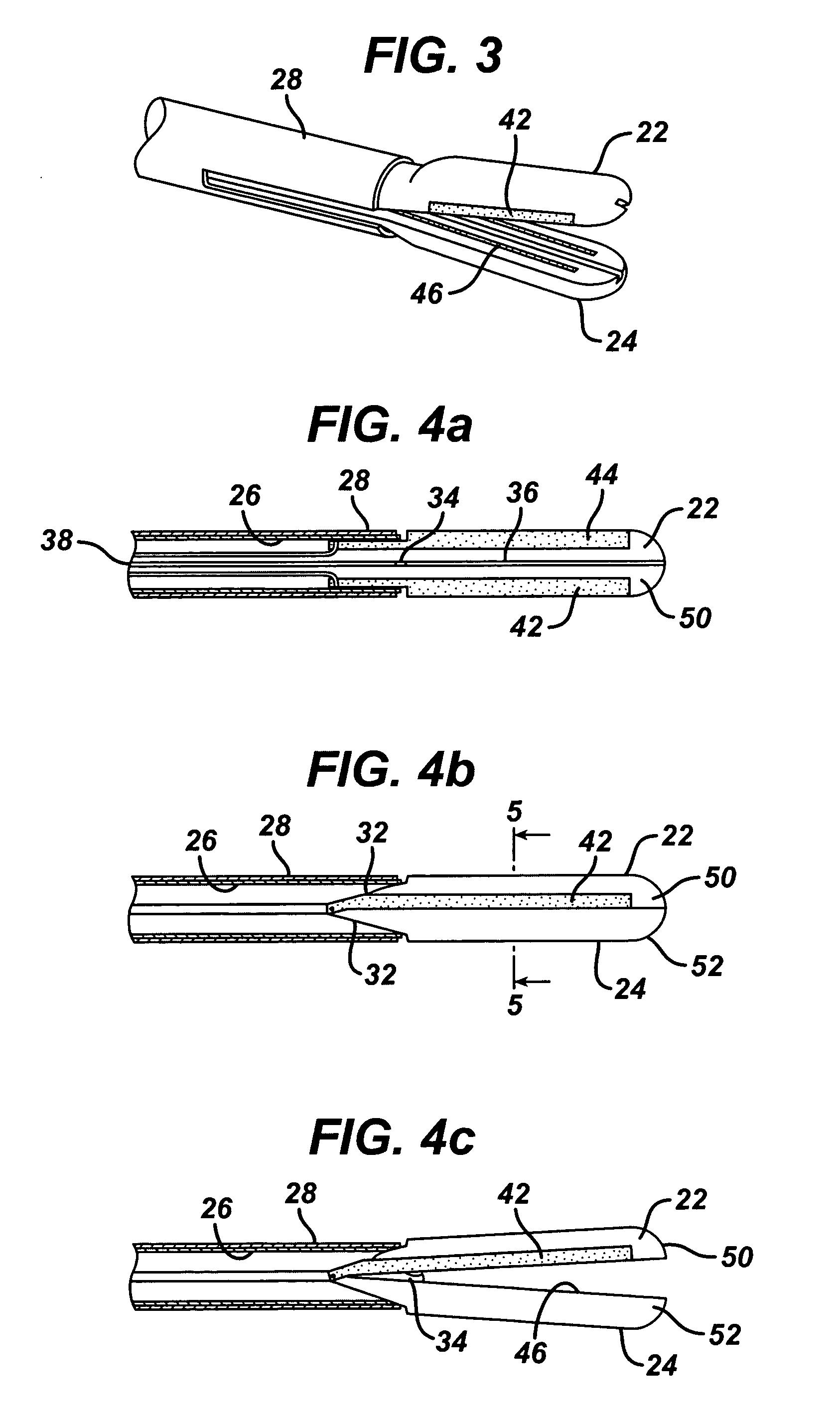Coagulating electrosurgical instrument with tissue dam
a tissue dam and electrosurgical technology, applied in the field of electrosurgical instruments, can solve the problems of tissue shrinkage, thermal damage to adjacent structures, blood vessel thrombosis, etc., and achieve the effect of increasing hemostasis and decreasing thermal damage to lateral tissues
- Summary
- Abstract
- Description
- Claims
- Application Information
AI Technical Summary
Benefits of technology
Problems solved by technology
Method used
Image
Examples
Embodiment Construction
[0075] Turning to FIG. 2, there is seen a perspective view of an electrosurgical instrument system, generally designated 10, embodying the present invention. The illustrated system includes an RF energy generator 12, a hand-held, endoscopic electrosurgical graspers 14, and a cable 16 that connects the graspers 14 to the plug clip receptacles 18, 20 for positive and negative bipolar outputs of the generator 12. While the illustrated graspers 14 are endoscopic graspers for use in minimally invasive surgical procedures, the invention of the present application is equally applicable to graspers designed for use in open surgical procedures.
[0076] The illustrated RF generator 12 may be, for example, a unitary monopolar-bipolar RF generator, such as the PEGASYS (Trademark of Ethicon Endo-Surgery Inc., Cincinnati Ohio) generator, and thus also include plug clip receptacles for the mono-polar active and return terminals. However, for the purposes of the present invention, only the bipolar c...
PUM
 Login to View More
Login to View More Abstract
Description
Claims
Application Information
 Login to View More
Login to View More - R&D
- Intellectual Property
- Life Sciences
- Materials
- Tech Scout
- Unparalleled Data Quality
- Higher Quality Content
- 60% Fewer Hallucinations
Browse by: Latest US Patents, China's latest patents, Technical Efficacy Thesaurus, Application Domain, Technology Topic, Popular Technical Reports.
© 2025 PatSnap. All rights reserved.Legal|Privacy policy|Modern Slavery Act Transparency Statement|Sitemap|About US| Contact US: help@patsnap.com



